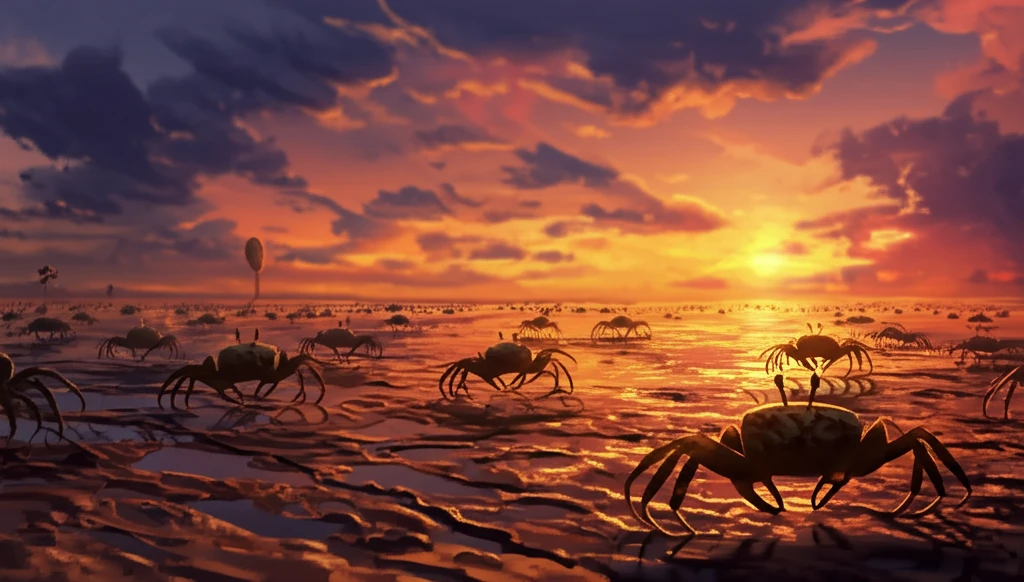
The Curious Case of the Departing Crabs: What Their Disappearing Act Reveals About Collective Behavior
"Uncover the hidden dynamics of animal collectives and how individual departures shape group behavior, offering insights into complex systems and bio-inspired designs."
The natural world is full of collective behaviors, from flocks of birds to schools of fish. Understanding how these behaviors emerge and are maintained is a complex challenge, but one with significant implications for fields ranging from robotics to urban planning. Scientists are increasingly looking to the animal kingdom for inspiration in designing more efficient and resilient systems. One promising area of research involves studying how individual actions influence the collective, particularly the role of those who choose to leave the group.
Traditionally, studies of collective behavior have focused on the unifying forces that keep groups together. However, a recent study on soldier crabs (Mictyris guinotae) sheds light on the importance of individuals who depart from the collective. These tiny crustaceans, known for forming large groups on tidal flats, offer a unique opportunity to observe how departures impact group dynamics. This research challenges the conventional wisdom and suggests that these seemingly random acts of leaving may play a crucial role in shaping the overall behavior of the collective.
The study, conducted by researchers at several Japanese universities, investigated the behaviors of soldier crabs in various experimental arenas. By tracking the movements of individual crabs and analyzing their interactions, the team uncovered surprising patterns related to those who chose to break away from the group. Their findings reveal that these departures are not simply random occurrences but are instead influenced by specific factors and have a tangible effect on the remaining collective.
Decoding the Departure Dynamics of Crabs

The research team's methodology involved creating controlled environments where they could observe the collective behavior of 40 soldier crabs. These environments, or arenas, were designed with varying shapes (circular and triangular) and the presence or absence of an inner wall, creating diverse spatial dynamics. The researchers meticulously tracked the movements of each crab, recording their positions and velocities over time. This data allowed them to analyze the relationships between individual actions and overall group behavior.
- Different arena shapes influenced crab activity and cohesion.
- Higher activity corresponded to lower cohesion, indicating movement disrupts group structure.
- Departing crabs displayed unique speed profiles compared to the group.
- Departures were often preceded by increased local population density.
Implications for Understanding Complex Systems
This study offers valuable insights into the complex dynamics of collective behavior, highlighting the importance of individual departures. The findings suggest that these departures are not merely random events but are influenced by local conditions and contribute to the overall organization of the collective. Understanding these dynamics can inform the design of bio-inspired systems, leading to more robust and adaptable technologies. By recognizing the role of individual actions in shaping collective behavior, we can gain a deeper appreciation for the intricate workings of the natural world and its potential to inspire innovation.
